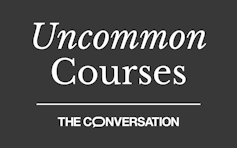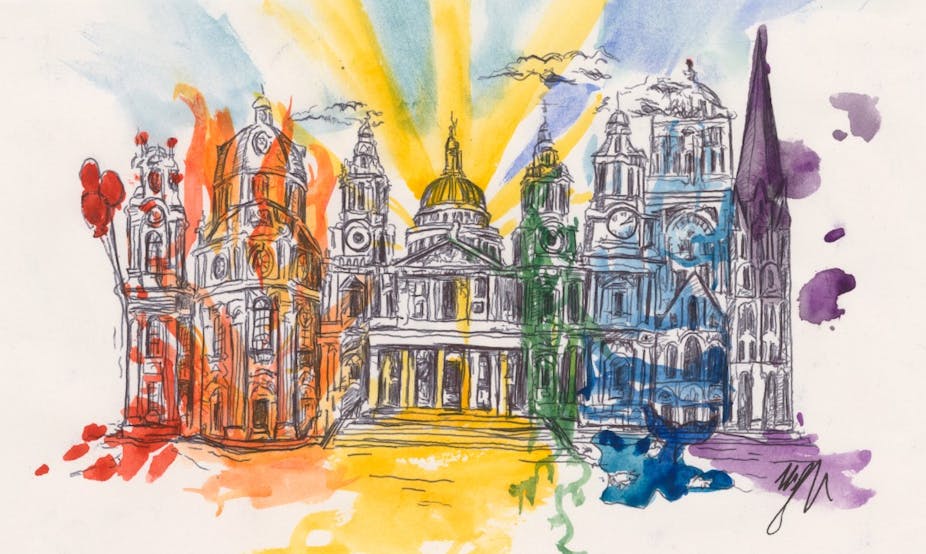
Uncommon Courses is an occasional series from The Conversation U.S. highlighting unconventional approaches to teaching.
Title of course:
“The Colors of Life and the End of Life”
What prompted the idea for the course?
For many years, I’ve worked as a literary artist at the University of Texas MD Anderson Cancer Center and the Hospital of the University of Pennsylvania. In both contexts, I work with advanced oncology patients and with people at the end of life.
During the hospital visits, I ask people about images that are close to their heart. As people speak, I write down their words verbatim and put their phrases into successive lines, like poetry – a gift for the patient and their loved ones.
Then, a year and a half ago, I was offered an opportunity to consult on an animation project in Hollywood. After decades working with university students and people facing the end of life, I found myself working with people at the beginning of life – with children.
The themes converged, and I was inspired to write a children’s book and teach a related university class about how art can help us understand major life insights and experiences, especially the wisdom that emerges at the end of life.
What does the course explore?
Classes pair original literary artworks that I produced with people at the end of life with related texts and images from philosophy, ethics, biomedicine, literature – including my new children’s book – and the fine arts. Together, we read everything from 15th century texts about the Ars Moriendi, or “the art of dying,” to contemporary writings by figures such as the physician-poet Rafael Campo and the surgeon Atul Gawande.
To organize key themes, each week we focus on one color and related thematic elements. In addition to the seven primary colors, the class examines pink, silver, gold, and black and white. The “orange” class, for example, centers on readings about creativity and communication, while the “green” class looks at issues of balance, continuity and people’s relationship to the natural world. During the “red” week, as we discuss strength and perseverance, we also examine debates about aggressive medical interventions at the end of life.
Students also produce their own narrative artwork, drawing on a meaningful encounter with another person – preferably, a statement that incorporates the wisdom of an elder.
What’s a critical lesson from the course?
The end of life is all about life itself and the many different types of love that we experience as human beings. The wisdom that can emerge at this time is vital, not just for those facing the end of life but for all of us.
“The Colors of Life” explores how art and color can provide a way to express and discuss experiences that can otherwise be hard to put into words. These can be deeply personal thoughts, and often, spiritual ones – especially in the face of death, suffering and uncertainty.
What will the course prepare students to do?
The class provides a window into a vital aspect of life that is often overlooked and avoided – namely, serious illness and the end of life.
While the class focuses on themes that are relevant to everyone, the course is particularly appropriate for students planning to enter into the medical and health care professions, or who will one day serve as caregivers. The emotions we explore engage some of the core competencies in pre-medical and medical education, from resilience and perseverance (red) to compassion and care (pink) to the ability to see multiple perspectives at once (black and white).
By focusing on color, this class also gives a concrete way for STEM-oriented learners – those in science, technology, engineering and math – to engage social, emotional, creative and humanistic themes.
I hope that all my students will draw on these skills and insights throughout their education and well beyond, within both their professional and personal lives.

